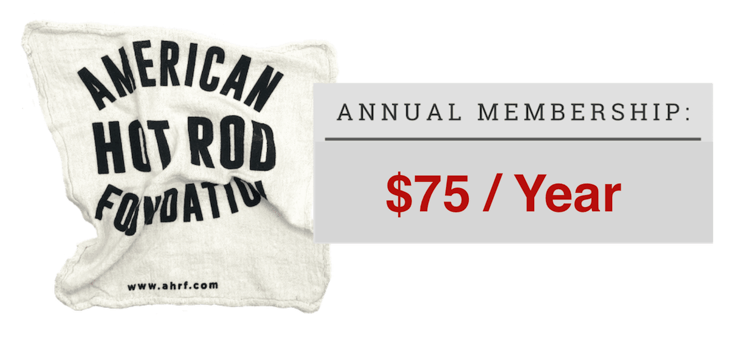As a founding father to hot rodding, Barney Navarro was an engineer whose way-out theories were very often put into practice with a great degree of success. His expertise in milling and machining parts resulted in flathead Ford V8s that pushed the limits.
Navarro got his mechanical start while living in New York. His dad had purchased a Willys Knight for the drive home to Los Angeles and Barney was put to work, saying, “My dad rented space in a shop, and at the age of 10, I became a gofer, as I assisted in the engine overhaul.”
Upon the family’s return to Los Angeles, Navarro attended Eagle Rock High School and enrolled in evening machine-shop classes at Glendale High. He was quickly put to work by Bernard and Bob Weaver who had a problem with their midget racecar. They had a straight-eight Locomobile engine that was too big for their class so they asked Navarro if he could cut it in half. He promptly did and recalled that it might not have been the fastest car at Gilmore but it worked.
At age 16, Navarro had his first hot rod, a homely ’29 Hudson to which he had fitted twin carbs. He graduated in 1937 and went to work as a machinist at Heidrich Tool & Die, his heart, however, was in hot rods and in 1940 he joined the Glendale Strokers Car Club along with the likes of Tom Beatty, George Hill and Doane Spencer. He purchased a ’39 Tudor and quickly milled the heads and fitted a Weiand intake with twin carbs—the first Phil Weiand ever made and paid for when Navarro machined Weiand’s first batch of 10 castings.
The ’39 was not fast enough and so Navarro removed the 21-stud engine and installed it into a modified roadster. In November 1941, it went 107 mph at the last Muroc meet before the war. Unfortunately, Uncle Sam had designs on Navarro and he entered the U.S. Army Air Corps where he trained as a navigator stationed at Fort Worth, Texas. However, he spent his spare time studying Ford’s intake that led, eventually, to his own intakes and speed equipment business.
After the War, Navarro worked for Lockheed before returning to Heidrich but what he really wanted was his own business. In 1947, with drawings made in the Army, he had patterns made by Hermann Husbey before approaching Victor Caliva at Aircraft Foundry Company to cast them. What he didn’t have was money. Nevertheless, Caliva cast the parts and later, when Navarro developed his own heads, he cast up a batch and told Navarro to pay for them as he sold them. Years later, just before he died, somebody visited Navarro to buy a pair of heads. Navarro said, “I only have 3 pairs left.” The customer quickly replied, “I’ll take all three.” It wasn’t until later the customer realized that Navarro told that to everybody. They all bought the ‘last three.’”
In 1948, Navarro advertised in the inaugural issue of HOT ROD Magazine and campaigned a lakes roadster powered by one of the first GMC-blown flatheads. The de-stroked, 176 ci, ’41 block was fitted with a Winfield cam, Kurten ignition and a 3-71 Jimmy driven by four V-belts—a fifth belt drove the water pump. By turning the Strombergs sideways and mounting them back-to-back, Navarro found he could cram four atop the blower. The car, originally owned by Navarro employee Bob Trummel, was assembled in four days with the help of Tom Beatty. At the SCTA El Mirage meet, September 25-26, 1948, Navarro went 139.75 mph in his Class C Roadster—up from 121.29 at the July meet. In December, he advertised that Harold Daigh had set a new Class C Roadster record at 143.19 mph using Navarro equipment. Navarro also tried racing his Roadster in CRA oval track events but never with much success.
More success, however, came with Beatty who also ran a Navarro-blown ’27 tagged the “Rust Bucket.” The pair also teamed up on a belly tank project, Navarro saying, “Tom lived next door to my shop and had a covered car port where he could do the welding and assembly work.” The tank was powered by a 295 ci ’48 Merc engine fitted with a 4-71 Jimmy producing 10 lbs of boost. At the ’51 Bonneville Nationals Beatty set a Class D Lakester record at 185.80 mph. The following year, despite destroying two engines, five pistons and three cylinder heads, Beatty proved the naysayers wrong with a best one-way speed of 203 mph and a two-way record of 197.17 mph.
With the increase in popularity of the flathead Ford V8, Navarro’s business boomed for more than a decade and he rightfully earned the nickname, “Oldfield of the hot rod industry.” From working out of his home and selling heads to speed shops out of the back of his truck he moved to a commercial building at 718 Verdugo Road, Glendale. Unfortunately, the city forced him to move to 5142 San Fernando Road. However, as his interests expanded beyond the lakes and hot rods he got involved in many different projects including a Chrysler Hemi-powered boat for Henry Kaiser that led Navarro in an entirely different direction and the development of a heart-lung machine used for thirteen years at the Kaiser Hospital in Hollywood.
During this time, Navarro also owned a concrete business and developed a line of concrete cutting equipment, including wall saws, handsaws and core drilling equipment. They used hi-cycle electric motors designed and built by Navarro Engineering, including all of the tooling for the casting of parts and the various components of the motors and electronics.
Before Navarro died in August 20, 2007, on his 88th birthday, he sold all his patterns to a young hot rod entrepreneur, Mike Herman of H&H Flatheads, La Cresenta, California. Herman put all the parts back intro production and continues to promote the Navarro name. Herman summed the man up saying, “All the way to the end, his favorite quote was, ‘There’s nothing more fun than learning.’ When he was in the hospital, he asked me for the instruction booklet for an MSD electronic ignition unit because he wanted to read up on it.”
By Tony Thacker
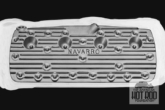

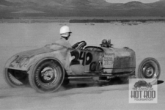
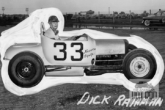
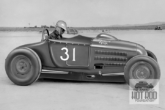
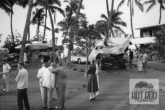
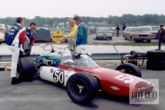

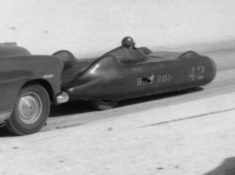 Bill Burke
Bill Burke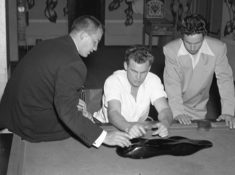 Robert Petersen
Robert Petersen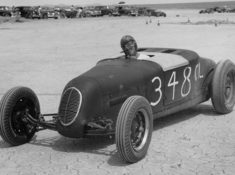 Don Waite
Don Waite Fred Larsen
Fred Larsen